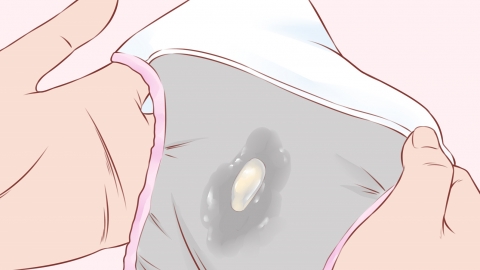Why is my vaginal discharge yellow and odorless?
Generally, yellowish leukorrhea without odor may be caused by normal changes in vaginal self-cleaning, residual urine contamination, cervicitis, trichomonas vaginitis, pelvic inflammatory disease, and other reasons. If discomfort occurs, timely medical attention is recommended. The specific analysis is as follows:

1. Normal Changes in Vaginal Self-Cleaning
There are various microorganisms in the vagina that maintain the vaginal microecological balance through mutual restraint. Under the influence of estrogen, vaginal epithelial cells contain abundant glycogen, which is decomposed into lactic acid by lactobacilli in the vagina, maintaining an acidic environment. This acidic environment helps inhibit the growth of other pathogens and may cause some vaginal discharge to appear slightly yellow, which is a normal physiological phenomenon. It is important to maintain personal hygiene, wash the vulva daily with warm water, and keep the external genitalia clean and dry.
2. Residual Urine Contamination
If urine is not promptly wiped away after urination, it may remain on the underwear and mix with leukorrhea, making the discharge appear yellowish but odorless. After urination, use clean toilet paper to wipe from front to back, change underwear frequently, choose cotton underwear with good breathability, and keep the vulva clean and dry.
3. Cervicitis
Cervicitis is usually caused by mechanical stimulation or injury, such as frequent sexual intercourse, childbirth, or abortion, which can damage the cervix and allow pathogens to invade and cause infection. Inflammation of the cervix can stimulate the cervical glands to over-secrete, producing excessive secretions that may appear yellowish. It may also be accompanied by increased vaginal discharge and bleeding after intercourse. Patients may use medications such as Baofukang suppository, cefixime dispersible tablets, Zhidai Xiaomai suppository, and others under the guidance of a doctor.
4. Trichomonas Vaginitis
Trichomonas vaginitis is caused by infection with Trichomonas vaginalis, primarily transmitted through sexual contact, but can also be spread indirectly through public baths, towels, swimming pools, etc. Trichomonads parasitize and multiply in the vagina, consuming glycogen and altering the vaginal pH. Additionally, the parasites produce toxins that cause congestion and edema of the vaginal mucosa, leading to increased secretions and the aforementioned symptoms. It may also be accompanied by itching and a burning sensation in the vulva. Patients may follow medical advice to use medications such as tinidazole tablets, metronidazole vaginal effervescent tablets, ornidazole dispersible tablets, and others to alleviate symptoms.
5. Pelvic Inflammatory Disease
Pelvic inflammatory disease is often caused by infections following childbirth, abortion, intrauterine surgical procedures, or poor menstrual hygiene. Pathogens spread to the pelvic organs via the reproductive tract or lymphatic system, causing pelvic inflammation. Inflammatory stimulation can increase exudation from pelvic tissues, resulting in increased leukorrhea that appears yellowish. It may also be accompanied by lower abdominal pain and a feeling of pressure. Patients may use medications such as cefixime tablets, azithromycin tablets, metronidazole tablets, and others under the guidance of a doctor.
In daily life, long-term use of sanitary liners should be avoided to prevent impaired ventilation in the genital area; attention should be paid to sexual hygiene, maintaining a fixed sexual partner, and avoiding multiple partners to reduce the risk of infection; appropriate physical exercise should be conducted to enhance physical immunity and improve the body's resistance to pathogens.





